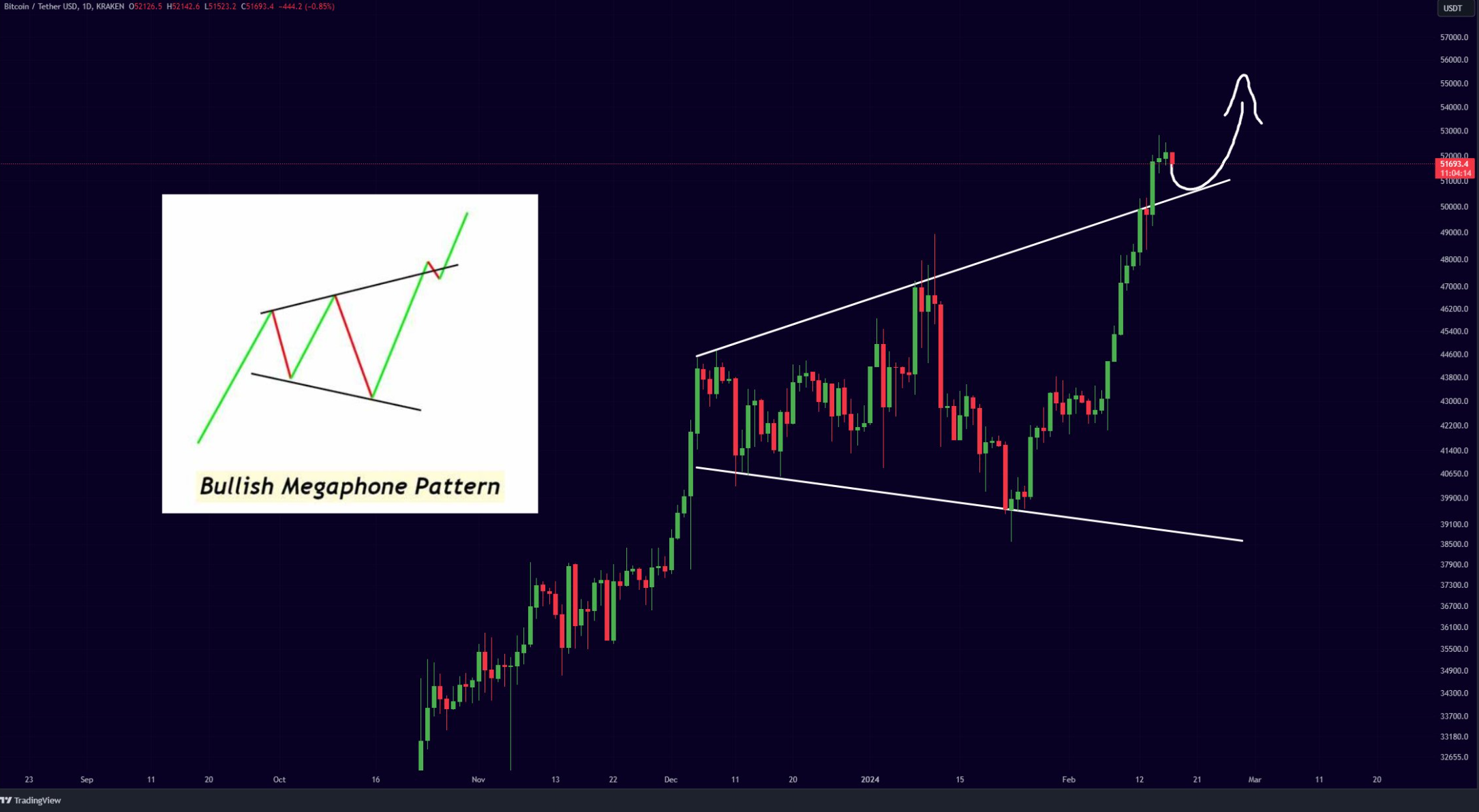
Bitcoin’s price retreated below $51,000 to retest critical support levels on Feb. 17 despite holding strong after stronger-than-expected CPI data over the past few days.
The flagship crypto was trading at $50,856 as of press time after touching a low of $50,625.
The decrease marks a 2.81% drop over the last 24 hours, with Bitcoin’s market capitalization now close to $997.31 billion, slightly below the $1 trillion mark.
Mixed sentiment
The recent price action comes amid a backdrop of both bullish and bearish sentiments among investors.
Analysis from Changelly suggests that the market sentiment has been predominantly bullish, with a 76% bullish sentiment against a 24% bearish outlook, underpinned by a Fear & Greed Index score of 72, indicating a prevailing sense of greed in the market.
Despite this optimism, Bitcoin has experienced significant price volatility over the past month, with 19 out of the last 30 days closing in the green.
Bitcoin bulls suggest the price is testing support before surging to yearly highs, as it has already broken out of a critical price ceiling to form a bullish megaphone pattern.

Focal point of discussion
Bitcoin, the world’s first decentralized crypto, continues to be a focal point of discussion among investors, policymakers, and the general public. Its energy consumption, security features, and potential for adoption as a legal tender in various countries remain hot topics.
The crypto’s journey from being perceived as a risky investment to becoming a primary reserve asset for major corporations like MicroStrategy and Bitcoin ETFs issued by major asset managers illustrates its growing acceptance and the changing attitudes toward digital currencies.
Furthermore, the legal and political landscapes around Bitcoin are evolving. Countries like El Salvador have adopted Bitcoin as legal tender, a move that has spurred discussions on the adoption of cryptocurrencies by other nations.
Meanwhile, environmental concerns related to Bitcoin mining continue to spur debates on the sustainability of cryptocurrencies and their impact on global energy consumption.
